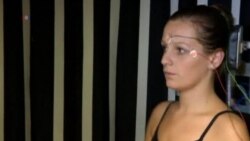Scientists have discovered differences in the brain structure of ballet dancers that may help them avoid dizziness while whirling around the stage and performing pirouettes. The findings could lead to the development of dance therapy for patients suffering from chronic dizziness.
Researchers at Imperial College London have studied brains of dancers who can perform multiple spins with very little or no feeling of dizziness. A team led by neurologist Barry Seemungal compared 29 female dancers with 20 female rowers of the same age range and fitness levels. The brains in the two groups reacted differently after being spun around in a dark room.
"When we correlated dizziness sensation to the white matter structure in non-dancers, we found a very strong correlation between how dizzy you were and the strength of a white matter network in the cerebral cortex, which is the part of the brain we use to sense and perceive things. In the dancers, we did not find this correlation," said Seemungal.
Normally, the feeling of dizziness stems from the vestibular organs in the inner ear. These fluid-filled chambers sense rotation of the head through tiny hairs that detect the fluid moving. After turning around rapidly, the fluid continues to move, which can make you feel like you're still spinning.
MRI brain scans revealed differences in two parts of the brain: an area in the cerebellum where sensory input from the vestibular organs is processed; and in the cerebral cortex, which is responsible for the perception of dizziness.
"It demonstrates to us that the brain is a very plastic organ and what happens to it is heavily dependent on what you do, and so years of training the brain re-models itself into a form that becomes quite resistant to dizziness," said Seemungal.
Dance student Clare Haven, who took part in the study, says dancers learn how to spin gradually. With a technique called "spotting" and with a lot of practice they learn to perform multiple pirouettes without feeling dizzy.
"It's something that you're taught how to do. It's not something that's natural. So from a young age in ballet class you run around pretending to be a fairy. You're just turning around on the spot. Then as you get older you're taught what spotting is, so you whip your head round. As you get older you practice where your balance is," said Haven.
Seemungal, who also runs a specialist clinic for dizziness at London's Charing Cross Hospital, says if dance therapy proves to be helpful to patients with chronic dizziness, it could be done in large groups and practiced at home. He says such therapy would be much cheaper than current individual treatments.
Researchers at Imperial College London have studied brains of dancers who can perform multiple spins with very little or no feeling of dizziness. A team led by neurologist Barry Seemungal compared 29 female dancers with 20 female rowers of the same age range and fitness levels. The brains in the two groups reacted differently after being spun around in a dark room.
"When we correlated dizziness sensation to the white matter structure in non-dancers, we found a very strong correlation between how dizzy you were and the strength of a white matter network in the cerebral cortex, which is the part of the brain we use to sense and perceive things. In the dancers, we did not find this correlation," said Seemungal.
Normally, the feeling of dizziness stems from the vestibular organs in the inner ear. These fluid-filled chambers sense rotation of the head through tiny hairs that detect the fluid moving. After turning around rapidly, the fluid continues to move, which can make you feel like you're still spinning.
MRI brain scans revealed differences in two parts of the brain: an area in the cerebellum where sensory input from the vestibular organs is processed; and in the cerebral cortex, which is responsible for the perception of dizziness.
"It demonstrates to us that the brain is a very plastic organ and what happens to it is heavily dependent on what you do, and so years of training the brain re-models itself into a form that becomes quite resistant to dizziness," said Seemungal.
Dance student Clare Haven, who took part in the study, says dancers learn how to spin gradually. With a technique called "spotting" and with a lot of practice they learn to perform multiple pirouettes without feeling dizzy.
"It's something that you're taught how to do. It's not something that's natural. So from a young age in ballet class you run around pretending to be a fairy. You're just turning around on the spot. Then as you get older you're taught what spotting is, so you whip your head round. As you get older you practice where your balance is," said Haven.
Seemungal, who also runs a specialist clinic for dizziness at London's Charing Cross Hospital, says if dance therapy proves to be helpful to patients with chronic dizziness, it could be done in large groups and practiced at home. He says such therapy would be much cheaper than current individual treatments.







